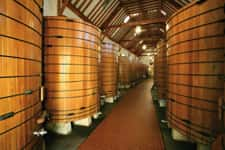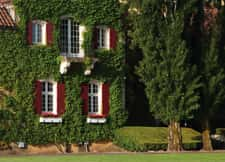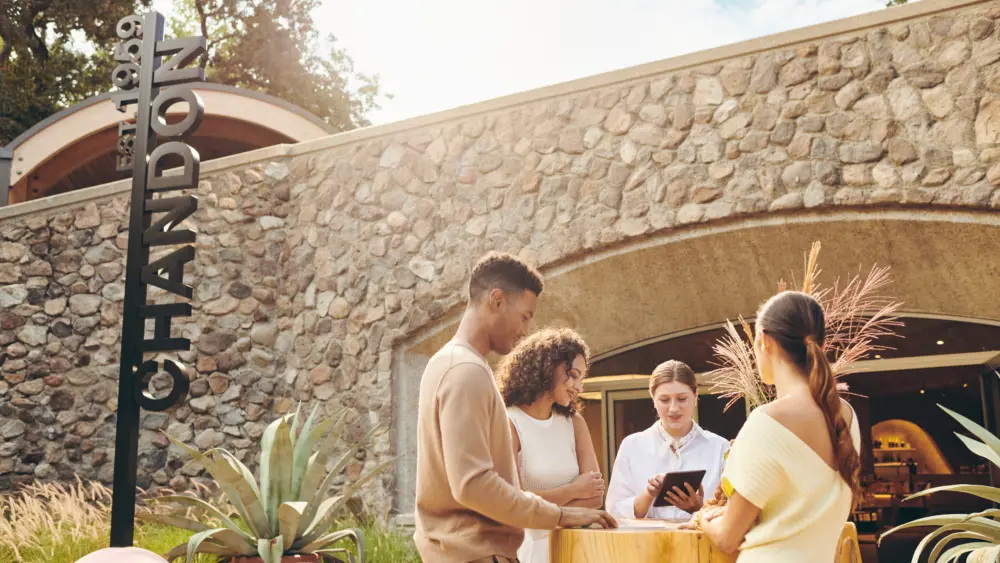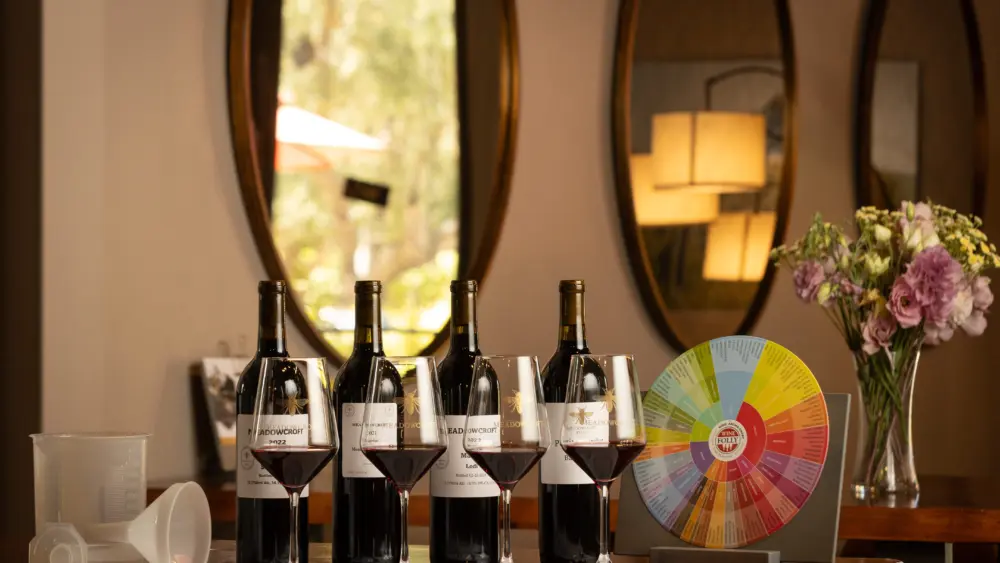Jordan Vineyard & Winery
1474 Alexander Valley Rd.
Healdsburg, CA 95448
(800) 654-1213
http://jordanwinery.com
Hours: By appointment Mon.-Sat.; Sundays May-Oct. only
Tasting Fees: Winery tour $30; Library tasting $20
Wines: Cabernet Sauvignon, Chardonnay
Appointment necessary: Yes
Food pairings: Yes
Picnics: No

Jordan Vineyard & Winery doesn’t have a tasting bar. Instead, it’s a place to enjoy an intimate, personal, seated experience. There’s no wine club either—more about that later.
In May 1972, on the same day Tom and Sally Jordan signed the deed on the land that’s now the winery’s valley floor vineyards, their son John, now CEO, was born. At the time, the property was 275 acres, but the family had its sights set a little higher: namely, the hilltop they could see from their valley floor land, where they envisioned an 18th century France-style chateau that could encompass all winemaking, storage, culinary and hospitality needs.
The problem was, someone else owned the land—and they didn’t want to sell. It wasn’t easy, but in 1974, Tom was eventually able to use his exemplary negotiation skills to acquire the property that would become what it is today: A 1,500 acre estate planted to 223 acres of Bordeaux varieties (Cabernet Sauvignon, Merlot and Petit Verdot; 113 acres of which are hillside fruit) and 18 acres of olive trees (three Tuscan varieties and one Spanish). Most vines are planted 400 feet above sea level, where there’s a mix of nine different types of soil (Tom, a geologist, chose the sites). Aside from that, the land has been left natural, so wildlife can roam freely. From its highest point, you can see Geyser Peak and Mt. St. Helena.
There are three hospitality suites in the chateau, a dining room, library tasting room and cellar, and a separate, two-bedroom guesthouse. There are also two lakes; the larger one (nine acres) is stocked with bass and has its own island.
The winery was completed the week before crush in 1976, when its first Bordeaux-style Cabernet was produced by Rob Davis—who has remained winemaker ever since; Davis vinified that first vintage of Jordan Cabernet Sauvignon alongside consulting winemaker André Tchelistcheff. Davis’ goal is to continue the winery’s legacy of making wine that’s food-friendly, balanced, consistent, elegant and ageable.
John, who was named CEO in 2005, strives to stay true to his parents’ original vision, but with some personal touches of his own. Under his leadership, the winery has become more energy-efficient and fine-tuned its sustainable practices with new technologies such as cool roofing, water recycling, soil mapping and micro-farming. He’s also redeveloped the hospitality program to create a “culture of excellence.” He says, “It’s the little details that separate the good from the great.”
For consumers, there’s a rewards program, where wine purchases add up for things like a private lunch or dinner with friends, or even a stay at the chateau with some fishing (or sleeping on the hammock).
These kinds of touches make the place feel like more of a boutique winery than one that produces 90,000 cases annually. In communications director Lisa Mattson’s words, “Our work culture is defined by details in a way that belies our size.” Lisa has a great blog (http://blog.jordanwinery.com), by the way, with all sorts of insights and tips for fellow wine and food enthusiasts.
Visitors can choose a tour and tasting or a library tasting, and the winery can accommodate groups of up to 12. Executive Chef Todd Knoll oversees the culinary program, which includes wine pairing tastes for visitors, meals for events, crafting the estate’s olive oil and overseeing the winery’s organic garden. The dishes he crafts are based on what’s fresh from the garden and how the wine is showing at the time. “It’s not about the food or wine,” he says, referring to his “go-to pairing guy” Evan Goldstein, “It’s about the tipping point where you can showcase both.”
Tastings begin in the winery’s library, which has shelves filled with an eclectic mix of things Tom collected while traveling, and overlooks the eastern part of the estate. When I visited, we began with the smooth, round, Burgundian-style 2005 Chardonnay paired with a savory pastry filled with Gruyere, duck rillettes, a Sauternes reduction and microgreens. The flavor profiles ran parallel, with the wine’s elements bringing out the duck’s earthy flavor and the pastry butter.
The next stop was the “hidden” cellar. I could tell you where it’s hidden, but that would spoil the fun. The cellar is cool and dimly lit, with a long, wooden table set with a bread and artisan cheese plate and the estate’s bright and lively olive oil at each place, along with a folio with information and Chef Todd’s recipes for pairing.
We tried the 2008 Chardonnay (sourced from a handful of family-owned, cool-climate vineyards located Russian River Valley): stone fruits on the nose with a hint of citrus, lively and round with a long finish.
Next was the 2000 Cabernet Sauvignon, which has blueberry, blackberry, cocoa and tobacco elements. The 2006, in contrast, has caramel characteristics on the nose and black cherry on the palate. Both were elegant. The conversation ran around restaurants and foods that would pair well with the wines. Our host, Cecil Hill, passed a wine bottle around so we could feel the temperature, then advised us to do that at restaurants when ordering by the bottle to tell if it’s being stored properly. Or you could always bring a bottle of Jordan along for the meal.




